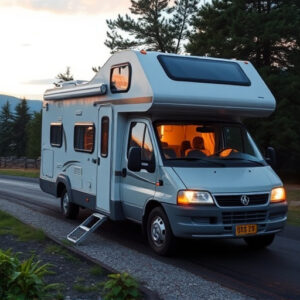Seasonal Rodent Control in Tucson: Traps, Baits & Strategies
Rodents like squirrels and rats thrive in Tucson's Catalina Foothills due to its mild climate,…….

Rodents like squirrels and rats thrive in Tucson's Catalina Foothills due to its mild climate, peaking in spring and summer when they seek abundant food sources. Effective rodent control involves using species-specific baits tailored to local weather, sealing entry points, and maintaining cleanliness. Seasonal variations require adjusting methods: traps at dusk during summer, and changing lures/traps as winter approaches. Tailoring tactics to local rodent behavior ensures year-round rodent control in Tucson, preserving a safe environment for residents.
In the diverse landscapes of the Catalina Foothills, understanding rodent behavior is key to effective rodent control. Tucson’s unique climate presents specific challenges and opportunities for managing seasonal rodents. This article guides folks navigating rodent control in Tucson, offering insights into the species prevalent in the area and the best traps and baits tailored to the local environment. Learn about implementing strategic, seasonal approaches for sustained rodent management that go beyond conventional methods, ensuring a safer, more harmonious co-existence. Discover expert tips for successful rodent control in Tucson.
- Understanding Rodent Behavior in the Catalina Foothills Climate
- Choosing the Right Traps and Baits for Effective Control
- Implementing Seasonal Strategies for Sustained Rodent Management in Tucson
Understanding Rodent Behavior in the Catalina Foothills Climate

Rodents, such as squirrels and rats, are prevalent in the Catalina Foothills region due to its unique climate. Understanding their behavior is key when implementing rodent control methods in Tucson. These creatures are particularly active during spring and summer when food is abundant. They tend to build nests close to sources of food, making it crucial for residents to take proactive measures to secure their properties.
The warm, dry summers and mild winters create an ideal environment for rodents to thrive. They are attracted to easily accessible food sources like bird feeders and garbage bins. By recognizing these patterns, homeowners can employ strategic rodent control tactics. Using specific baits tailored to the local species and weather conditions is effective. Additionally, sealing entry points and maintaining a clean environment significantly reduces their population in the Catalina Foothills area.
Choosing the Right Traps and Baits for Effective Control

When it comes to choosing rodent control methods in the Catalina Foothills, understanding the local climate and rodent behavior is key. For effective seasonal rodent traps and baits, residents in Tucson should opt for weather-adapted solutions. During the hotter summer months, rodents are more active at night due to the heat, so setting traps with bait at dusk can be productive. In contrast, during winter, when temperatures drop, rodents may seek warmer areas, leading to increased activity indoors.
For baits, natural options like peanut butter or dried fruits appeal to a variety of rodents and are effective year-round. However, for specific species like the common house mouse, ant bait stations can be highly successful due to their preference for ants as a food source. It’s important to select traps and baits that cater to the local rodent population to ensure optimal results in rodent control Tucson residents require.
Implementing Seasonal Strategies for Sustained Rodent Management in Tucson

In Tucson, effective rodent control requires a strategic approach that adapts to the region’s distinct seasonal changes, especially in the Catalina Foothills area. The weather patterns in this region offer unique challenges for pest management, demanding tailored solutions throughout the year. During the warmer months, rodents are more active, seeking abundant food sources. In response, implementing robust baiting strategies becomes crucial, with a focus on appealing to their heightened appetites. Traps should be placed strategically in areas where human activity is minimal yet rodent presence is confirmed.
As winter approaches, the landscape transforms, influencing rodent behavior and migration patterns. A sustainable management strategy involves modifying both bait and trap placement. Lures can be adjusted to cater to changing dietary preferences, while traps may need to be repositioned to follow the rodents’ natural movements. By aligning these tactics with seasonal trends, Tucson residents and businesses can achieve long-lasting control over rodent populations, ensuring a safer, healthier environment for all.
In conclusion, understanding rodent behavior in the unique Catalina Foothills climate is key to successful rodent control in Tucson. By choosing the right traps and baits tailored to seasonal patterns, residents can implement effective, sustainable strategies for managing rodent populations year-round. This proactive approach ensures a quieter, more comfortable living environment for folks in this vibrant desert metropolis. For optimal results in rodent control Tucson, seasonal adjustments and consistent monitoring are essential.







